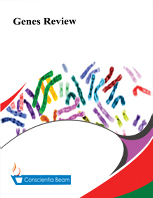Evaluation of Techniques for the Diagnosis of Rotavirus Gastroenteritis in Paediatric Patients
DOI:
https://doi.org/10.18488/journal.103/2015.1.1/103.1.6.27Abstract
Rotavirus is the major etiology of acute gastroenteritis in infants and young children worldwide. It has been estimated that about 39% of childhood diarrhoea hospitalizations are caused by the virus and nearly half a million children die from the infections each year especially in developing countries on the Asian subcontinent, Africa, and Latin America where health care facilities are in short supply. Stool specimens collected from the first to fourth days of illness are optimal for detection of the infection. Diagnosis was originally performed using electron microscopy, which is still occasionally used in centers where it is available. Routine diagnosis is however, now performed by antigen detection on feces using commercially available, simple, rapid immunochromatographic dipstick style kits which have superseded the earlier latex agglutination and enzyme immunoassay methods whose usefulness in diagnosis is still relevant. Reverse transcription polymerase chain reaction of feces is also available in some reference and research centers, and is particularly useful for identification of outbreaks due to serogroups other than group A. Similarly viral culture and serology are also available but do not play much roles in diagnosis of acute disease. Rotavirus infection is indeed a public health problem and early, rapid, accurate and reliable diagnostic techniques are essential for effective patient management and infection control.

